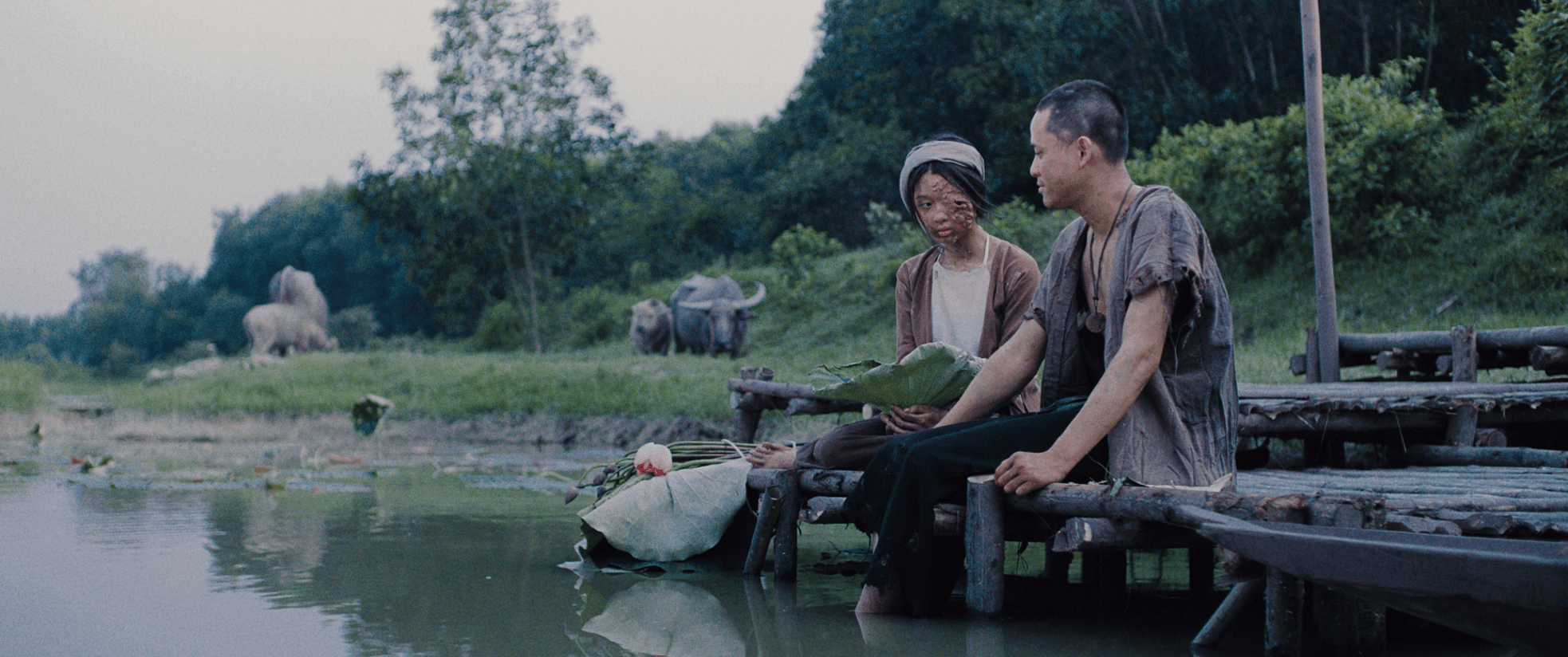Twists in the Adaptation of Tấm Cám
Since its introduction, the project Cám has sparked curiosity as a horror adaptation of the well-known fairy tale Tấm Cám. Coupled with the success of director Trần Hữu Tấn’s previous films, Tết Ở Làng Địa Ngục and Kẻ Ăn Hồn, audiences are eager to see what fresh elements Cám will bring.
Compared to the fairy tale, Cám introduces a novel premise reminiscent of the “What if” scenarios often found in Hollywood films. What if Cám is not actually the favored child of the family? What if Tấm and Cám’s father is still alive? What if the two sisters had loved each other before falling into tragedy?
In the original tale, Cám is depicted as petty and always bullying the gentle Tấm alongside her stepmother. In this film adaptation, the narrative takes a different direction. Cám (played by Lâm Thanh Mỹ) is born ugly and is mistreated by her father Hai Hoàng (Quốc Cường) and her stepmother (Thúy Diễm). In contrast, Tấm (Rima Thanh Vy) is the only one in the family who genuinely loves her half-sister.
From that point on, the plot begins to follow a familiar “darkening” trend seen in contemporary films and games. The village where Cám’s father serves as the village chief appears peaceful on the surface but harbors a terrible secret. This tranquility stems from a horrific pact made by Hai Hoàng with a demon named Bạch Lão in the forest. Every ten years, he must sacrifice a virgin girl from the family to the evil spirit. Tragedies begin to unfold continuously within Tấm and Cám’s family and the village.
The story of Cám evokes a sense of familiarity while also feeling fresh for the audience. The film retains classic details such as calling for fish, catching shrimp, trying on clothes, and chopping down the areca tree, but with a distinct perspective. The film continuously presents intricate plot twists, leaving viewers anticipating the direction the story will take, especially regarding how the controversial ending of the fairy tale will be resolved.
The horror elements in the film are heightened through bloody action sequences and the frightening appearances of the characters. The makeup design is a strong point of the film, featuring elaborate transformations like Cám’s face, the grotesque body of the demon Bạch Lão, and various murder scenes. The film’s climax leaves a lasting impression with intense action and the powerful presence of the actors.
Strong Performances and Well-Invested Character Designs
In terms of acting, Lâm Thanh Mỹ deserves much praise for her transformative performance. Cám marks her first “adult” role after turning 18. In her return to Cám, Lâm Thanh Mỹ showcases all three states of her character—from the initially meek and resigned, to budding love in the middle, and finally, the haunting revenge with her eyes and smile.
Moreover, Lâm Thanh Mỹ faced the challenge of performing many scenes with part of her face obscured due to her grotesque makeup. The actress reported that she had to learn to express emotions with one eye while also conveying the character’s feelings through body language in certain segments, particularly when Cám becomes unhinged.
In the film titled Cám, other characters like Tấm and the prince (Hải Nam) have reduced roles. Nevertheless, the actors still have moments to shine and showcase their characters’ personalities. Well-known actors Quốc Cường and Thúy Diễm portray Tấm and Cám’s parents convincingly. Their characters provide moments that elicit both anger and sympathy from the audience, as they are ultimately ordinary people facing the monstrous legacies inherited from their ancestors. Additionally, NSƯT Hạnh Thúy, though present for a short time, makes a memorable impression with her uniquely designed character in the horror universe of Tấm Cám.
The film maintains the spirit of horror fantasy while incorporating lessons learned from the previous projects Tết Ở Làng Địa Ngục and Kẻ Ăn Hồn. Director Trần Hữu Tấn and his team show a commitment to costume design and settings. The crew consulted with expert Phan Thanh Nam (artist of Ấm Chè) to create many beautiful traditional outfits. The film’s best costume appears in the scene where the prince marries Tấm, while another grand scene showcases over 200 extras. The most impressive setting is perhaps the sacrificial forest, where the team meticulously chose a special location in Quảng Trị, filled with terrifyingly shaped branches.
